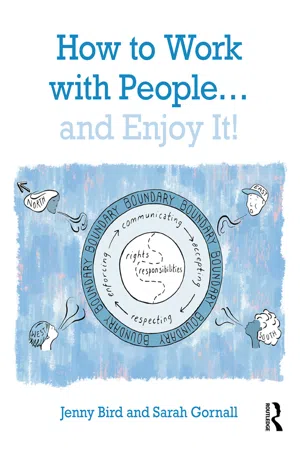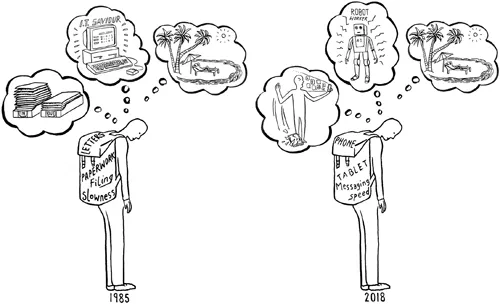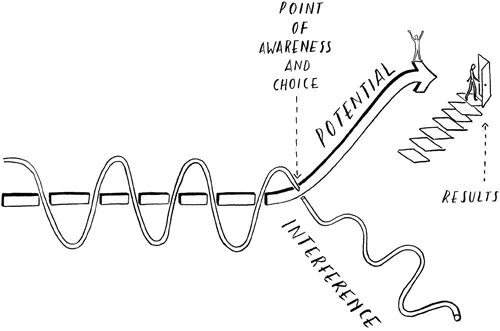![]()
Chapter 1
Introduction
Introduction
The carpet fitter punched the new carpet deftly into the corner and with great panache made a sweeping final cut.
“Well, I don’t think they’ll be able to replace me with a computer”, he said. Then reflecting some more, he added, “The rest of you will be working ten hours a week and I’ll still be on my knees ten hours a day”.
It was 1985. In our dream of a brave new world, computers would take over all administrative, informational, data and statistical jobs and most managerial, commercial and logistical ones. Many people would work only minimal hours accomplishing things which had previously taken long and arduous working weeks. We had earnest discussions about increased leisure, the impact on the entertainment infrastructure, health, spending and crime. Everyone would have more time to talk to each other. Everyone would be happier.
In the event, overall, the reverse has happened. We work longer hours, hunch over our computers and are constantly on call. The internet and information technology have made so many things possible. As e-communication is faster, we expect immediate responses. There is a mindset that because we can, we must. Yet a huge percentage of people are unhappy at work. Interpersonal tensions, circular discussions and poor communication between managers and the managed lead to disillusionment, demotivation and stress.
There is an iterative story about new technology. It has the potential to liberate us and, at the same time, it overwhelms us. Computers have worked out codes to allow us to decipher encrypted messages in times of war when our human brains would have taken too long. Algorithms run by computers have threatened the security of world financial systems. In the 1970s people talked about Artificial Intelligence and we debated how far computers could replace humans. Would computers be able to translate languages? Surely not. Surely only human beings could interpret idiom, register and the rich realm of language? Now, in the not so new millennium, there is a plethora of translation apps. Artificial intelligence used to be the stuff of science fiction: now we know that our cars can drive themselves and robots can not only relieve us of mundane, arduous tasks but also respond to us like sentient human beings.
And along the way, we have developed so many more ways to communicate with each other. So many more ways to trip up and miscommunicate. Face to face meetings, telephone and letters are no longer the only ways of communicating. Email, text, message, Twitter, WhatsApp, LinkedIn, Facebook, Pinterest, Instagram, Skype and video conferencing all offer opportunity, speed and global reach. They each have their own etiquettes and protocols, each impact on communication in different ways, each brings both opportunity and pressure. It can be easy to forget that the end recipient of all this communication is another human being.
Freed by technology?
The more different ways there are to communicate with people, the greater the potential for miscommunication, distress and conflict.
Could life (and work) be different?
The answer is YES.
And a big part of what will make that YES come about is down to people.
People is not “them”. It’s us; you and me; how we interact with others; what we choose to do individually and collectively.
Long ago, someone told us that the two most important areas to focus on as a leader were the people and the money. Our experience as coaches brings us alongside people in all sectors of work, at different levels of responsibility. We support clients in times of tension, change, misunderstanding, reflection, resurgence and success. Time and time again, we meet people experiencing similar challenges who find that by looking inside themselves and relating differently to those around them, shift happens. So, the place where we are going to put our emphasis in this book is on making a difference in our personal and professional relationships, starting from the inside out.
A colleague coach tells the story of meeting a CEO who summoned his leadership team early one morning and took them to a top floor window which overlooked the company car park. “Look out there”, he said. “See how they leave their cars. How they droop as they draw near and enter the building. I want to change that”.
Organisations often say that people are the most important thing, but they actually put their emphasis somewhere else. This leader really wanted to make a difference.
In our work with people across a huge range of organisations, we’ve discovered the human face of the astonishing statistic that 85% of people just do not enjoy their work. So much of our time is spent at work that this seems a terrible waste of energy, motivation, idealism and skill. Because what happens when you don’t enjoy your work? You start performing in a jobsworth way, don’t seize opportunities, resist change, snipe at colleagues and take out your frustrations on those around you at home and in the community. What a vicious cycle! No wonder there is such a high rate of depression. No wonder companies underachieve, in parallel with the individuals who work there.
We’ve had the privilege of working with many talented people, who have wanted to break out of this downward cycle, enjoy their work and their colleagues and have enriching relationships and great work-life balance. And they’ve often achieved it! So, this book shares some of the learning from our own experience and from working with our clients, in the hope that some of the ideas will help you enjoy your work more too!
Potential – Interference = Results
Results emerge when potential is maximised and interference is minimised.
Potential
The human brain is immensely powerful. Numerous processes are operating constantly; it is always active, even when we sleep. It is taking care of us, operating the whole human system and handling information from a huge range of data sources and stimuli. A number of subconscious processes are occurring at all times. The things we recognise as distinct thoughts are only a small part of this colossal activity. Individually we have huge potential.
Our collective world history is full of examples of success and progress; of learning about what motivates others, how to get the best out of teams, how to make the world a better place to live. As a species, we have enormous potential. Yet many of us live with the frustration of not achieving our best, either individually or collectively.
Interference
Things get in the way and interfere in all areas of life, personal and professional. Some people suspect that if they put more effort into relationships, these will be more successful. Yet they don’t actually behave in a way that they know will make a difference. Others suspect that if they put more discretionary effort into work, they would enjoy it more. Yet statistics indicate that they don’t. A variety of polls and research suggests that only a minority of people are actively engaged with their work. A worldwide Gallup poll conducted in 2011–12 in more than 140 countries showed that 63% of people in work were not engaged, 24% were actively disengaged (leaving only 13% who actually enjoyed their work). Five years on, in 2017, 85% of respondents were reported as not engaged. We observe that people who are not engaged are unlikely to offer discretionary effort to their employers.
What stops them?
And even more to the point, what stops us?
What might stop us includes:
• Myths and stories
• Assumptions
• Controlling behaviour
• Lack of self confidence
• Fear
• Lack of connection
• Poor or misplaced communication.
These interferences alter our behaviour in ways which we may not be aware of at the time.
What this book is about
This book is about maximising potential and minimising interferences to improve results and enjoyment both at work and in our interactions with other people more generally. It is about:
• Being yourself: growing, knowing and being comfortable in your own skin
• Recognising and accepting others as different: working with other people, their preferences and approaches to create synergy and results
• Developing collaborative and generative working patterns and productive relationships
• Replenishing and recharging before you run out of steam.
It will help you recognise what’s going on and have more choice about how to react and what to do.
The sequence is:
• Know yourself
• Manage yourself
• Accept others
• Recognise your impact on each other
• Develop strategies for good collaborative working
• Identify watchpoints and things that can go wrong
• Experiment with techniques to improve interactions and overcome hindrances
• Stress test your model and create a personal approach.
It is a practical handbook with pointers for reflection, tools for experimentation, models for analysis of relational dynamics, tables and diagrams to stimulate personal and professional discovery and development.
Different assumptions – our story
Here’s an example of how we notice our experience and draw learning from it and how easy it is to jump to assumptions. At the planning stage of the book, we, Jenny and Sar...


